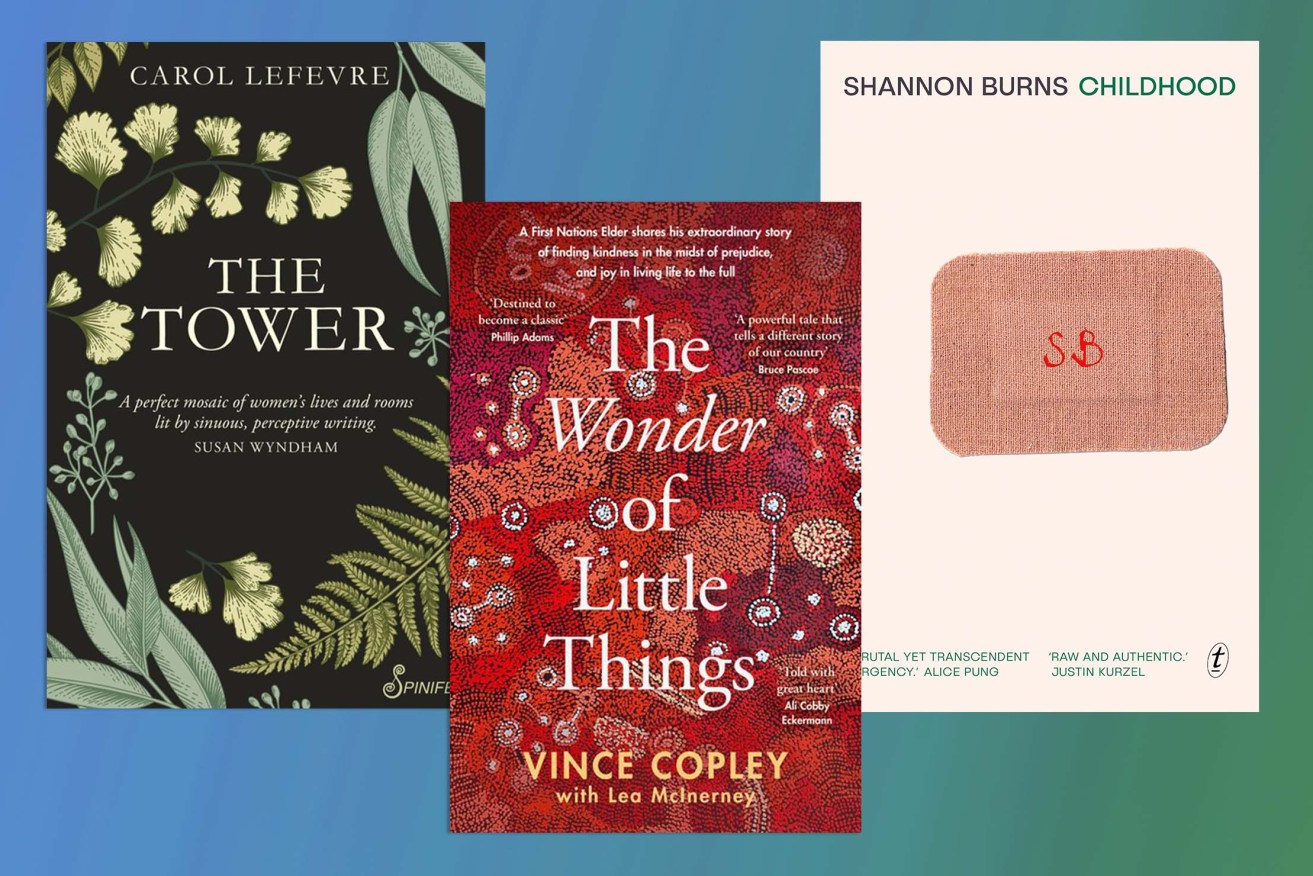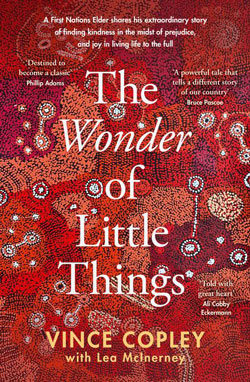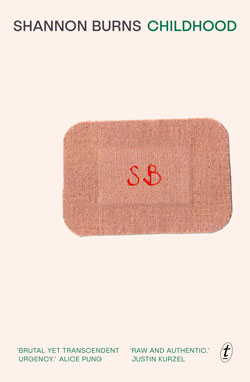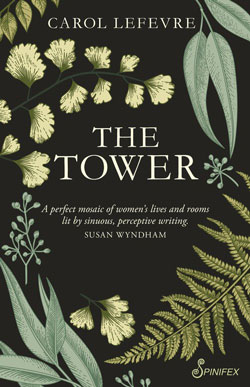Diary of a Bookseller: Stories that strike close to home
This month our book reviewer recommends several new titles by South Australian authors – including a pair of powerful memoirs and a rewarding work of fiction that brings together 12 connected stories.


Every once in a while, there’s a little burst of local activity, as several South Australian authors release new books at the same time.
Of course, there’s always a steady trickle of South Australian publishing coming from local independent publishers like Wakefield Press and Midnight Sun. There’s also a healthy ecosystem of micropublishers, such as Glimmer Press (which is publishing an anthology of writing from Flinders University, Last Call, in mid-November) and Buon-Cattivi Press. This month, Buon-Cattivi publishes The Story of She, a short-story collection exploring tales of women who are confined to strict social expectations. Author Doris Pushpam’s inspirations include Jane Austen and Maya Angelou.
If you’re interested in reading good books with stories set in the state where you live, written by authors who live here, it’s a good idea to keep an eye on these publishers. I know from experience they do valuable work – much more for love than for money.
I’ve recently read and loved four new books by South Australian authors, all released in October – just in time for the Christmas period.
 The Wonder of Little Things (ABC Books) is the memoir of Ngadjuri elder Vince Copley, as told to Lea McInerney over several cups of tea, over many years. “I’m the storyteller, you’re the writer, and this is our book,” McInerney recalls Copley telling her. “This for him was reconciliation in action – black and white working alongside each other on shared interests and projects.”
The Wonder of Little Things (ABC Books) is the memoir of Ngadjuri elder Vince Copley, as told to Lea McInerney over several cups of tea, over many years. “I’m the storyteller, you’re the writer, and this is our book,” McInerney recalls Copley telling her. “This for him was reconciliation in action – black and white working alongside each other on shared interests and projects.”
Sadly, Copley died last year, before he could see the book published – but after it had been completed and signed to a publisher.
Vince Copley grew up between Point Pearce, the mission where he was born and where his grandparents lived, and Adelaide. He describes living in a converted shopfront on Henley Beach Road with his family and catching the tram to the beach when his mother was out at work – and later, living at St Francis Boys Home in Semaphore with other Aboriginal boys who would become his lifelong friends.
He remembers fellow St Francis housemate Harold Thomas designing the Aboriginal flag for a 1971 rally – and Copley’s wife, Brenda, making “thousands” of ad hoc flags in response to demand from all over Australia. He worked alongside best friend Charles Perkins in various capacities, including moving to Canberra to work for “Charlie” after Gough Whitlam made him assistant secretary in the Department of Aboriginal Affairs. He was part of a team that established the Aboriginal Legal Service in Adelaide.
Copley recalls befriending Muhammad Ali in Malaysia (with Charlie), meeting future Yothu Yindi lead singer Mandawuy Yunupingu when he was still a school principal, and hosting David Gulpilil – who correctly predicted Copley’s wife’s pregnancy – when he was visiting Adelaide.
But while Copley was deeply involved in advancing the rights and improving the lives of First Nations people – on a national and even international scale – the quiet strength of this memoir is more personal and specific than that. It represents so much, in its details, about First Nations lives in Australia and the conditions and barriers imposed on them in the times Copley lived through. And it calls for genuine reconciliation.
In a heartbreaking passage near the start of the book, Copley describes the death of his beloved older brother Colin of an infected cut: the closest hospital, 10 miles away, doesn’t admit Aboriginal people, and no one has a car, so the family must catch a bus to the next-nearest hospital, 50 miles away. They don’t arrive in time to save him. “It’s just so sad when he dies,” reflects Vince. There’s something so plaintive and heartbreaking about how plainly and honestly this information is given.
I’d just keep going until I found someone who treated me right… once one person treated me right, others soon did too
Copley speaks in a similar tone about having to hide from “welfare” as a child, at Point Pearce mission. “Me being the smallest of us kids and not able to hide quickly like the others, I spent most of the time with Mum and my grandparents.” It’s quietly damning in how matter of fact it is: it reads as extraordinary now, but was ordinary for First Nations people.
In the prologue, Copley reflects: “If someone was trying to stop me from enjoying myself or from making a living just because of the colour of my skin, I’d just keep going until I found someone who treated me right… once one person treated me right, others soon did too.” In a later passage, he says that one of the nicest things that ever happened to him was when he was babysitting for a family he boarded with in Cunnamulka, during his years as a serious football player, and the young daughter stepped in front of the television during a “scary” moment, wanting to protect him. This combination of determined achievement, stoic resilience and open sensitivity speaks volumes about his character.
The Wonder of Little Things is a beautiful and important book, and I hope it’s widely read and reflected on.
 Shannon Burns’ childhood memoir – aptly named Childhood (Text) – is an exquisitely written literary debut about growing up in Adelaide’s northern and western suburbs, with parents who were unreliable in every sense, and finding hard-won salvation in books and literature. It’s endorsed by Alice Pung and Justin Kurzel (the filmmaker behind Snowtown and Nitram), two exceptional artists whose work expertly presents layered, confronting dissections of poverty and disadvantage.
Shannon Burns’ childhood memoir – aptly named Childhood (Text) – is an exquisitely written literary debut about growing up in Adelaide’s northern and western suburbs, with parents who were unreliable in every sense, and finding hard-won salvation in books and literature. It’s endorsed by Alice Pung and Justin Kurzel (the filmmaker behind Snowtown and Nitram), two exceptional artists whose work expertly presents layered, confronting dissections of poverty and disadvantage.
Childhood reminded me of Jimmy Barnes’ Working Class Boy, about his terrifying, alienating childhood in similar Adelaide suburbs, with parents who had been parented badly, and didn’t know how to parent – and his own eventual salvation through art (music) and love. It also reminded me, for different reasons, of Craig Sherborne’s childhood memoirs. I haven’t read a memoir with such a savage, tender, idiosyncratic narratorial voice – one that at once embodies and eviscerates toxic masculinity – since Hoi Polloi and Muck.
Childhood is its own creation, though. It’s more wounded and profoundly damaged than Sherborne’s books; more literary and intellectual than Barnes’ memoir.
Shannon Burns’ father left his mother for the last time when he was two years old; initially, she had tricked him into staying with her after telling him she was pregnant. Eleven months later, Burns was born. “She was in her late teens. He was close to twenty. Neither had finished high school and both were decorated with amateur tattoos.”
When Burns was six, he was sent to live with his father, stepmother and stepsister. He passionately loved his mother, who was affectionate with him, but she was neglectful, abusive when her temper ran high, and ultimately unable to look after him. He sensed his father and stepmother didn’t love or want him, but they were more reliable in terms of practical and material provisions. He details a life moving between precarious, unsafe households, often unwanted and rarely adequately cared for.
Burns moves out of home early, leaving high school to work in a recycling factory, and having an affair with a friend’s mother, in attempts to escape his environment – moves that only trap him in it further. Later, we learn near the beginning of the book, he’ll become a literature professor at university, a literary critic – he’ll become a member of the upper middle class. The tension lies not in what he will become, but how he will become it.
Fathoms-deep hurt and anger seethe beneath the surface of meticulously controlled, forensically observed prose. Burns alternately observes and inhabits his former self. When he’s in observation mode, the reader entirely places their trust in him; his layered reflections are crisp, candid and have the bearing of hard-earned self-knowledge. When he’s inside his former self (moving from first-person “I” to distant third-person – “the boy”), we’re provoked to question the boy’s analysis or interpretation: this is experience reported as it was lived in the past, rather than at the processed, filtered distance of the present.
Still, Burns is in complete control, of course. He’s showing us a glimpse of what it was like to be him, before he returns to telling us. It’s a masterful pas de deux that mirrors the enduring conflict between who Burns – the boy he was – must appear to be on the surface (a performance of toughness and competence, one he sometimes enjoys and even relishes) and who he is on the inside (vulnerable, anxious, heartbroken).
Literature, he writes, is an escape, a chance to immerse himself in other lives. But it’s more than that. “Perhaps literature provided a model that suited my needs. Perhaps it encouraged me to believe that we are changeable, kaleidoscopic creatures. Maybe I found it easier being the person I was, someone who seemed to be one kind of thing but was another thing entirely, because literature made it seem ordinary.”
 Carol LeFevre writes gorgeous, intricately crafted books about the lives of women and girls that at once evoke great literary stylists like Elizabeth Strout and Jean Rhys, and yet are like no one else. Her books are often defiantly themselves, flouting genre and literary trends. In The Happiness Glass, she interspersed fictional short stories with slivers of memoir. In the slender story-cycle Murmurations (shortlisted for the NSW Premier’s Literary Award for Fiction and the Adelaide Festival Literary Award for Fiction), she wove together five stories that gradually revealed their connections – with a stunning final twist.
Carol LeFevre writes gorgeous, intricately crafted books about the lives of women and girls that at once evoke great literary stylists like Elizabeth Strout and Jean Rhys, and yet are like no one else. Her books are often defiantly themselves, flouting genre and literary trends. In The Happiness Glass, she interspersed fictional short stories with slivers of memoir. In the slender story-cycle Murmurations (shortlisted for the NSW Premier’s Literary Award for Fiction and the Adelaide Festival Literary Award for Fiction), she wove together five stories that gradually revealed their connections – with a stunning final twist.
LeFevre’s new work of fiction, The Tower (Spinifex), similarly brings together 12 connected stories, which make the reader work to discover and piece together their common threads – again, with rewards that make the effort more than pay off.
A recurring story sequence threads between the interlocking stories. Dorelia, who has recently lost her husband and must dodge the patronising concerns of her adult children (“beloved aliens”), sells the family home to buy a house with a beguiling tower room, where she will spend her days reading and writing. One of the stories she plans to write is a reverse-engineered Rapunzel. “I thought I’d re-write the stories that put old women in a poor light,” she tells her approving best friend Bunty, an artist with no children of her own (and no regrets). “But where will you start?” says Bunty. “There are so many.” This arch wit, wonderfully characteristic of LeFevre’s writing, echoes through this book.
The women in this story sequence range around the world, and through the years. We follow some of them from youth – their aspirations and what they push against – to old age. We meet hopeful artist Mariel as a girl who doesn’t fit, Mazzy, in the small town she grew up in (a recurring location, along with London). “She was filled with grief that she belonged to this place and an almost equal grief that she could never truly belong.”
Questions of being torn – between art and love, between loved ones, between duty and being truly known or fully realised, and between places of belonging – are another constant in The Tower. A woman loses her child to tragedy: “Neither she nor her mother would ever laugh again.” There are illicit pregnancies. A young girl is raped and killed on a football oval, her death a warning that comes to have different meanings across generations. Objects, like pearl earrings, carry resonance and meaning across stories. Different facets of characters are revealed through different perspectives.
Age, art, aspiration, love and motherhood all recur as themes, and acquire layers of resonance as the stories accumulate. I will declare here that I have edited Carol’s work (including her next novel, Temperance, published next year by Wakefield Press). But that has only made me more truly a fan of her writing.
Vikki Wakefield is best known as one of Australia’s finest young adult writers, winning a swag of awards for her novels, including the 2020 Young Adult Book of the Year in the Children’s Book Council of Australia Awards. After You Were Gone (Text), her first adult novel, is an expertly crafted psychological thriller that reminded me of Adrian McKinty’s breakthrough international bestseller The Chain in its need-to-know addictive propulsion.
Abbie’s wedding, to a kind man she’s besotted with, begins with the promise of a new start. Six years ago, as a single mother, a frustrated Abbie dragged her wilful, misbehaving daughter Sarah shopping. When she let go of her hand, Sarah disappeared, and she’s never been found. On her first day as a wife, Abbie picks up the phone to an anonymous caller… who seems to know what happened to her daughter, and will only give her the information she craves with all her being if she systematically destroys her own life.
Imprints bookseller Megan Koch’s review of After You Were Gone is coming to InReview this month, so I won’t say much more. But I will tell you that I disturbed the sleep of my husband by refusing to turn off the bedside lamp and put this book down until I had read to the end and knew the outcome. And I was not disappointed when I closed the final page at 3am. The ending felt just right.
Jo Case is a monthly columnist for InReview and deputy editor, books & ideas, at The Conversation. She is an occasional bookseller at Imprints on Hindley Street and former associate publisher of Wakefield Press.




